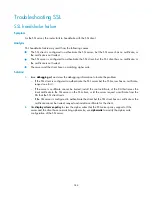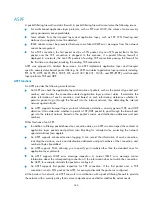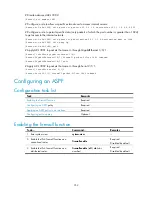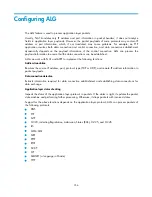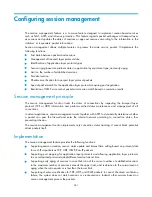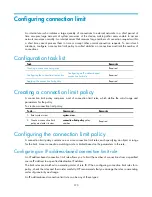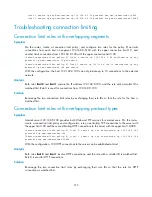
358
4.
Exchanging data
The host and the FTP server exchange data through the established data connection.
Enabling ALG
To do...
Command...
Remarks
1.
Enter system view.
system-view
—
2.
Enable ALG.
alg
{
all
|
dns
|
ftp
|
gtp
|
h323
|
ils
|
msn
|
nbt
|
pptp
|
|
rtsp
|
sccp
|
sip
|
sqlnet
|
tftp
}
Optional.
Enabled for all protocols by
default.
ALG configuration examples
NOTE:
The following examples describe only ALG-related configurations, assuming that other required
configurations on the server and client have been done.
FTP ALG configuration example
Network requirements
As shown in
, a company accesses the Internet through a router with NAT and ALG enabled.
The company provides FTP services to the outside. The inside network segment of the company is
192.168.1.0/24, and the IP address of the FTP server is 192.168.1.2. Configure NAT and ALG to
meet the following requirements:
•
The host in the outside network can access the FTP server in the inside network.
•
The company has four public network addresses, which are 5.5.5.1, 5.5.5.9, 5.5.5.10, and
5.5.5.11. The FTP server uses the public network address of 5.5.5.10 to provide services to the
outside.
Figure 125
Network diagram for FTP ALG configuration
Configuration procedure
# Configure the address pool and ACL.
<Router> system-view
[Router] nat address-group 1 5.5.5.9 5.5.5.11
[Router] acl number 2001
[Router-acl-basic-2001] rule permit
[Router-acl-basic-2001] quit

